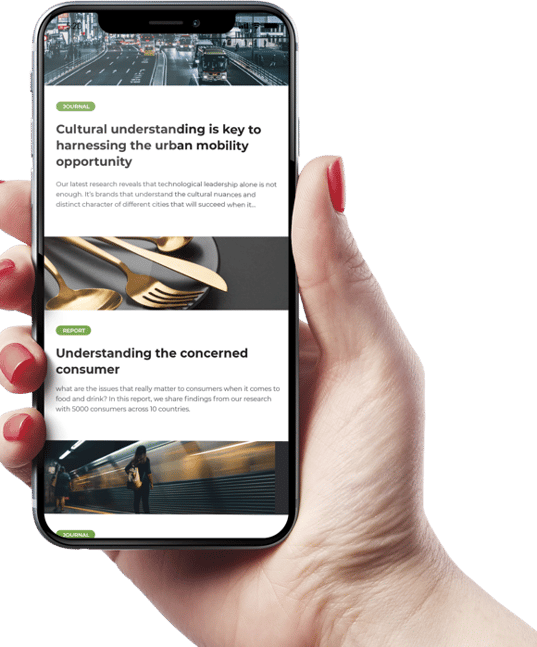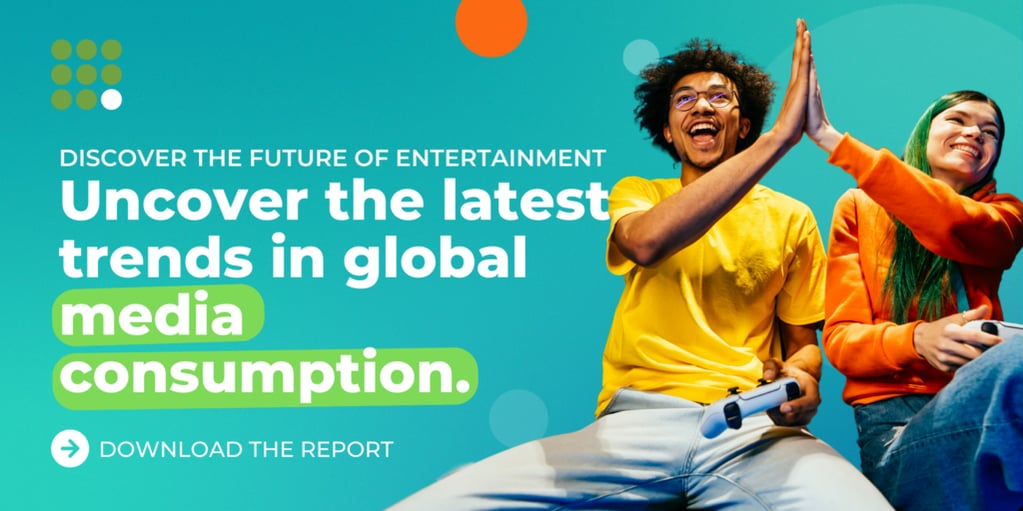Stephen Few once said, “Numbers have an important story to tell. They rely on you to give them a clear and convincing voice.” This quote captures the essence of data storytelling—transforming raw data into compelling narratives that drive action and influence decisions.
Data storytelling combines data, visuals, and narrative to create a powerful tool that informs, engages, and persuades. As brands gather vast amounts of data, the real challenge lies in converting this data into actionable insights. Effective data storytelling bridges this gap by making complex data understandable and relatable, turning abstract numbers into stories that resonate.
The demand for data storytelling skills has grown significantly. LinkedIn reports that data analysis remains one of the most sought-after skills for recruiters. Despite this, there’s often a disconnect between those who can analyze data and those who can communicate the insights effectively. Many professionals with advanced degrees in economics, mathematics, or statistics excel at data analysis but struggle with the “last mile”—communicating their findings.
With the rise of self-service analytics and business intelligence tools, more people across various business functions are generating insights. This democratisation of data has led to an unprecedented number of insights produced. Yet, without the ability to tell a compelling data story, many of these insights fail to drive action.
Data storytelling is not just about creating visually appealing charts and graphs. It’s about weaving a narrative that highlights the significance of the data, provides context, and makes the insights memorable. Stories have always been a powerful way to communicate ideas and influence behaviour. In the context of data, storytelling can help transform complex information into an understandable but also compelling and actionable narrative.
The Importance of Data Storytelling
Historical Perspective
Back in 2009, Dr. Hal R. Varian, Google’s Chief Economist, made a prescient statement: “The ability to take data—to be able to understand it, to process it, to extract value from it, to visualise it, to communicate it—that’s going to be a hugely important skill in the next decades.”
Fast forward to today, and Varian’s prediction has proven remarkably accurate. As businesses amass more data than ever, the ability to analyze and effectively communicate this data has become crucial.
Current Trends
The demand for data storytelling skills is on the rise. LinkedIn’s recent Workforce Report highlighted that data analysis skills have consistently ranked among the top sought-after skills by recruiters over the past few years. Data analysis was the only category consistently ranked in the top four across all the countries analyzed. This surge in demand underscores the critical need for professionals who can bridge the gap between data analysis and decision-making.
The role of data storytellers is becoming increasingly vital within organisations. These individuals possess a unique blend of skills that allow them to not only analyse data but also craft narratives that make the insights accessible and actionable. As more organisations recognise the value of data-driven decision-making, the ability to tell compelling data stories is becoming a highly prized skill.
The “Last Mile” Problem
Despite advancements in data analytics, many businesses still struggle with what is often referred to as the “last mile” problem—the gap between data analysis and actionable insights. This gap exists because many data professionals are adept at uncovering insights but lack the skills to communicate these findings effectively.
Without clear communication, valuable insights can remain hidden, and their potential impact is lost.
For example, a report by McKinsey & Company highlighted that while brands are increasingly investing in data and analytics, many are not realising the full value of these investments due to a lack of effective communication. The report emphasised the importance of translating data insights into clear, compelling narratives to drive action and change within organisations.
Moreover, as self-service analytics tools become more prevalent, the responsibility for generating insights is expanding beyond traditional data teams. This democratisation of data means that more people across various business functions are generating insights. However, without the ability to tell a compelling data story, these insights often fail to drive action.
Components of Data Storytelling
Data
At the heart of any data story lies the data itself. Valuable data is accurate, relevant, and timely. It is the foundation upon which insights are built, and without reliable data, the entire storytelling effort can falter.
Valuable data should be comprehensive enough to provide a complete picture and focused enough to address specific questions or problems. It’s not just about the quantity of data but the quality. High-quality data should be clean, well-organised, and representative of the phenomena it aims to describe. In data storytelling, data serves as the factual backbone, lending credibility and substance to the narrative being crafted.
Visuals
Data visualisation is a powerful tool in data storytelling. It transforms raw data into visual formats like charts, graphs, and maps, making complex information more accessible and easier to understand. Visuals help to highlight key trends, patterns, and outliers that might be missed in a table of numbers.
According to a study by the Wharton School of Business, presentations using visual aids were 67% more persuasive than those that did not. Effective data visualisations clarify the data and engage the audience, making the insights more memorable and impactful. They act as the visual representation of the story, providing a clear and intuitive way for audiences to grasp the significance of the data.
Narrative
The narrative is the element that brings data and visuals together into a coherent and compelling story. A well-crafted narrative provides context, explaining what the data means, why it matters, and how it can be used. It guides the audience through the data, highlighting the key insights and their implications. Storytelling has been fundamental to human communication for thousands of years because it resonates emotionally.
According to neuroscientist Dr. Paul Zak, stories can trigger the release of oxytocin, a hormone associated with empathy and trust. This emotional engagement helps to make the data more relatable and memorable. In data storytelling, the narrative acts as the bridge between the logical and emotional sides of the brain, ensuring that insights are not only understood but also felt and acted upon.
Why Data Storytelling is Essential
Human Connection
Data storytelling is more than just a method for presenting information; it’s a way to forge a human connection. Neuroscientific research has shown that stories stimulate the brain in ways that pure data cannot.
When we hear a story, multiple areas of the brain light up, including those responsible for emotional processing. Dr. Paul Zak’s research on oxytocin reveals that this “trust hormone” is released when we engage with a story, fostering empathy and connection. We tap into this emotional response by weaving data into a narrative, making the information more relatable and impactful. This connection is crucial for influencing decision-making, as it helps audiences understand the data and feel its significance.
Memorability
Stories are inherently more memorable than raw data. A study by Stanford professor Chip Heath demonstrated that 63% of people could remember stories, whereas only 5% could recall individual statistics. This disparity is because stories provide context and meaning, making the information easier to recall. Heath’s research involved participants using an average of 2.5 statistics in their presentations, but only 10% incorporated stories. Despite this, the stories were what audiences remembered. By embedding data within a narrative framework, data storytelling enhances retention, ensuring that key insights stick with the audience long after the presentation is over.
Persuasiveness
The power of stories to persuade is well-documented. In a study comparing two versions of a brochure for the Save the Children charity, one featuring infographics and the other a story about a girl named Rokia from Mali, the story-based version significantly outperformed the infographic version in terms of donations.
Participants who read the story donated an average of $2.38, compared to $1.14 for those who read the infographics. This stark difference underscores the persuasive power of storytelling. By humanising data and presenting it within a compelling narrative, data storytelling can drive more substantial and emotional engagement, leading to more significant action.
Engagement
Storytelling uniquely captivates audiences, drawing them into a trance-like state where they become less critical and more receptive. This phenomenon, described by mathematician John Allen Paulos, involves a suspension of disbelief that allows the audience to fully immerse into the narrative.
When people are engaged in a story, their intellectual guard drops, and they are more open to the message being conveyed. This state of engagement is crucial for data storytelling, as it helps to ensure that the audience is not just passively receiving information but actively connecting with it.
By combining data with a strong narrative, storytellers can maintain attention, foster deeper understanding, and inspire action. In essence data storytelling is essential because it transforms the way we communicate insights. By connecting on a human level, making information memorable, enhancing persuasiveness, and engaging the audience, data storytelling ensures that valuable insights are not only conveyed but also internalised and acted upon.
Challenges and Solutions in Data Storytelling
Common Challenges
While data storytelling can be a powerful tool, it is not without its challenges. Here are some common obstacles that practitioners often face:
- Data Complexity: One of the primary challenges in data storytelling is dealing with complex and voluminous data. Translating intricate datasets into a coherent and understandable narrative can be daunting. The more complex the data, the harder it is to extract and communicate key insights effectively.
- Audience Diversity: Different audiences have varying levels of data literacy and different preferences for how they consume information. What resonates with one group may not be effective for another. This diversity can make it difficult to craft a story that is both universally understandable and engaging.
- Maintaining Accuracy: Simplifying data to make it more digestible can sometimes lead to oversimplification, which can result in the loss of nuances and important details. Striking the right balance between simplicity and accuracy is a common challenge.
- Ensuring Engagement: Keeping an audience engaged throughout a data presentation can be challenging, especially when dealing with dry or technical content. It requires a careful balance of storytelling elements to maintain interest without sacrificing the integrity of the data.
- Technology Limitations: Not all organisations have access to advanced data visualisation tools or the technical expertise needed to create compelling visual stories. This can limit the ability to present data effectively.
Effective Solutions
Despite these challenges, there are several strategies and best practices that can help overcome these obstacles and improve the effectiveness of data storytelling:
- Simplify and Focus: Start by identifying the key insights you want to communicate. Focus on these main points and simplify the data as much as possible without losing its essence. Use clear and concise visuals to highlight these insights. Tools like dashboards and summary reports can break down complex data into more manageable pieces.
- Know Your Audience: Tailor your data story to the audience’s level of understanding and interests. Conduct a brief analysis of your audience beforehand to gauge their data literacy and preferences. This will help you choose the right level of detail and the most appropriate storytelling techniques.
- Balance Simplicity with Accuracy: While it’s important to make the data understandable, do not oversimplify it to the point of misrepresentation. Use annotations, footnotes, and supplementary materials to provide additional context and detail where necessary.
- Engage with Narrative Techniques: Use storytelling techniques to keep your audience engaged. This can include crafting a compelling opening, building a narrative arc with a clear beginning, middle, and end, and using anecdotes or case studies to humanise the data. Interactive elements such as live polls or Q&A sessions can also help maintain engagement.
- Leverage Technology: Invest in user-friendly data visualisation tools that can help you create professional and compelling visuals. There are many tools available, ranging from basic charting software to advanced visualisation platforms. Training staff in these tools can also enhance your data storytelling capabilities.
- Iterate and Improve: Data storytelling is an iterative process. Seek feedback from your audience to understand what works and what doesn’t. Use this feedback to refine and improve your storytelling techniques continually. Regular practice and iteration will help you become more adept at conveying complex data in an engaging and understandable way.
Final Thoughts
Data storytelling is not just a valuable skill but a fundamental necessity in today’s business landscape. As organisations continue to amass vast amounts of data, the ability to translate this data into compelling stories will distinguish the successful from the struggling. The true power of data lies not in its collection but in its interpretation and communication. Those who can weave data into engaging narratives will drive more informed decision-making, foster innovation, and create significant competitive advantages.
Looking ahead, the future of data storytelling is poised for exciting evolution. With advancements in technology, particularly in artificial intelligence and machine learning, the tools available for data visualisation and analysis will become even more sophisticated. These technologies will enable deeper insights and more dynamic storytelling, making data even more accessible and understandable to a broader audience.
As data literacy becomes a core component of education and professional development, we can expect a new generation of professionals who are not only data-savvy but also skilled storytellers. This shift will democratise data storytelling, allowing insights to flow more freely across all levels of an organisation and fostering a culture of data-driven decision-making.
In an increasingly complex and data-rich world, the ability to tell stories with data will become ever more critical. It’s not just about presenting numbers; it’s about making those numbers speak, engaging audiences, and driving meaningful action. As we move forward, the organisations that embrace and excel in data storytelling will lead the way, turning information into impact and insights into innovation. The future is bright for those who master the art of data storytelling, transforming data into a powerful narrative that can shape the course of businesses and industries alike.




